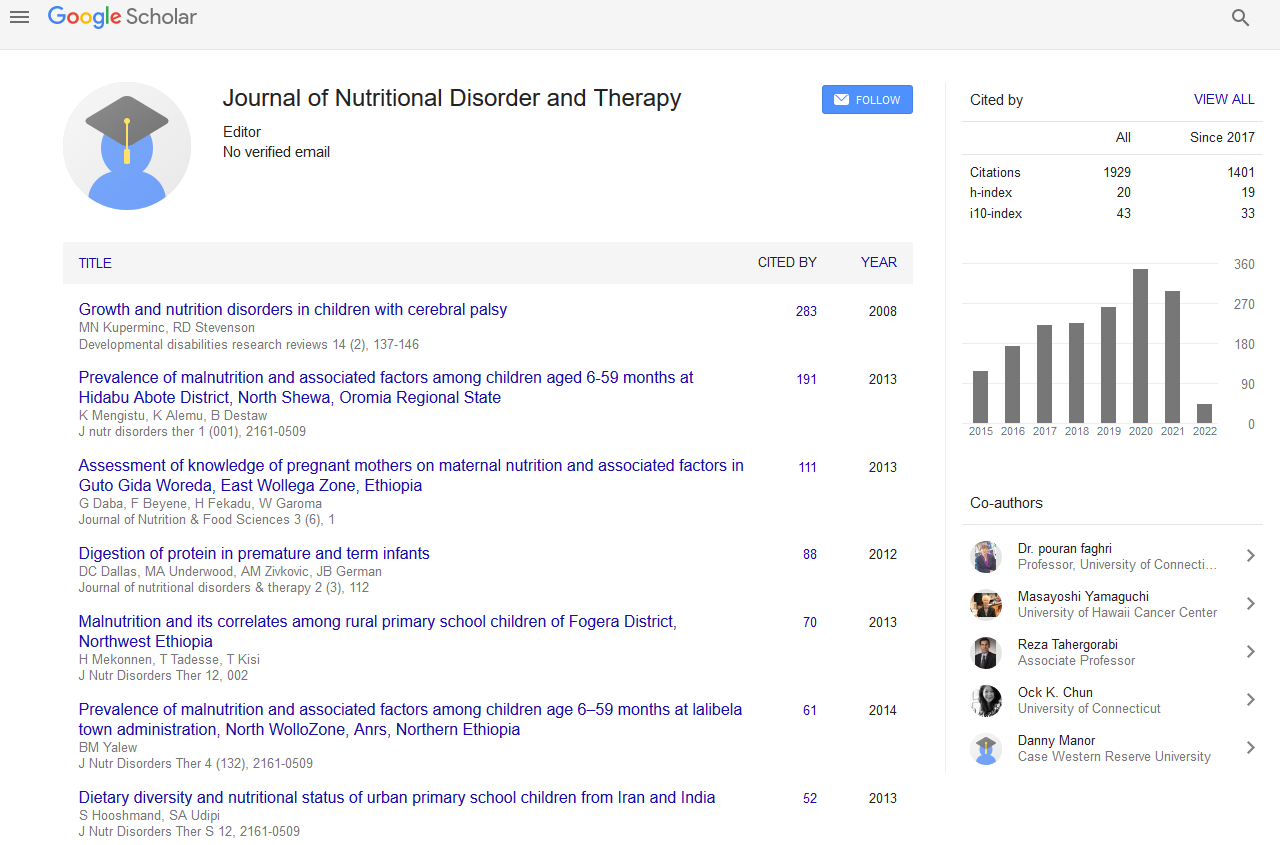Indexed In
- Open J Gate
- Genamics JournalSeek
- Academic Keys
- JournalTOCs
- Ulrich's Periodicals Directory
- RefSeek
- Hamdard University
- EBSCO A-Z
- OCLC- WorldCat
- Publons
- Geneva Foundation for Medical Education and Research
- Euro Pub
Useful Links
Share This Page
Journal Flyer

Open Access Journals
- Agri and Aquaculture
- Biochemistry
- Bioinformatics & Systems Biology
- Business & Management
- Chemistry
- Clinical Sciences
- Engineering
- Food & Nutrition
- General Science
- Genetics & Molecular Biology
- Immunology & Microbiology
- Medical Sciences
- Neuroscience & Psychology
- Nursing & Health Care
- Pharmaceutical Sciences
Abstract
Dietary Nutrient Intake Assessment in Maintenance Hemodialysis Patients by Comparing Two Food Record Forms
Sachiko Nagahama, Kunihiro Yamagata, Chie Saito, Hideto Takahashi, Takahiro Seura, Sumiko Higure and Tsutomu Nakanishi
This study aimed to evaluate the accuracy of dietary assessment in hemodialysis patients by comparing the nutrition intake estimated from two food record forms with the actual nutrition intake. Thirty-nine outpatients receiving stable maintenance hemodialysis in Japan were analyzed. Each patient was provided meals with known nutrient contents for two days and instructed to record the food intake at each meal using a standard food record form (method A) or a semi-quantitative food record form (method B). Each patient underwent two assessments by the two methods in a crossover manner. The concordance proportions between estimated dietary food intake by method A or method B and the actual dietary intake were compared for energy, protein, fat, carbohydrate, potassium, phosphorus, and salt. Estimated energy intake using method B (96.2%) was significantly closer (p<0.05) to actual energy intake, compared to method A (90.9%). However, estimated fat intake using method A (96.9%) was significantly closer (p<0.01) to actual fat intake compared to method B (113.4%). A significant difference (p<0.05) was observed between actual and estimated energy intake by method A (88.2%) in females. A significant difference (p<0.001) was observed between actual and estimated total energy intake (86.7%) or carbohydrate intake (85.0%) for method A in subjects aged ≥ 65 years. Method B has improved accuracy compared to method A in estimating energy intake, but still underestimates energy intake. Method B also underestimates carbohydrate intake and overestimates fat intake. Further study is required to improve the accuracy of dietary assessment method.


